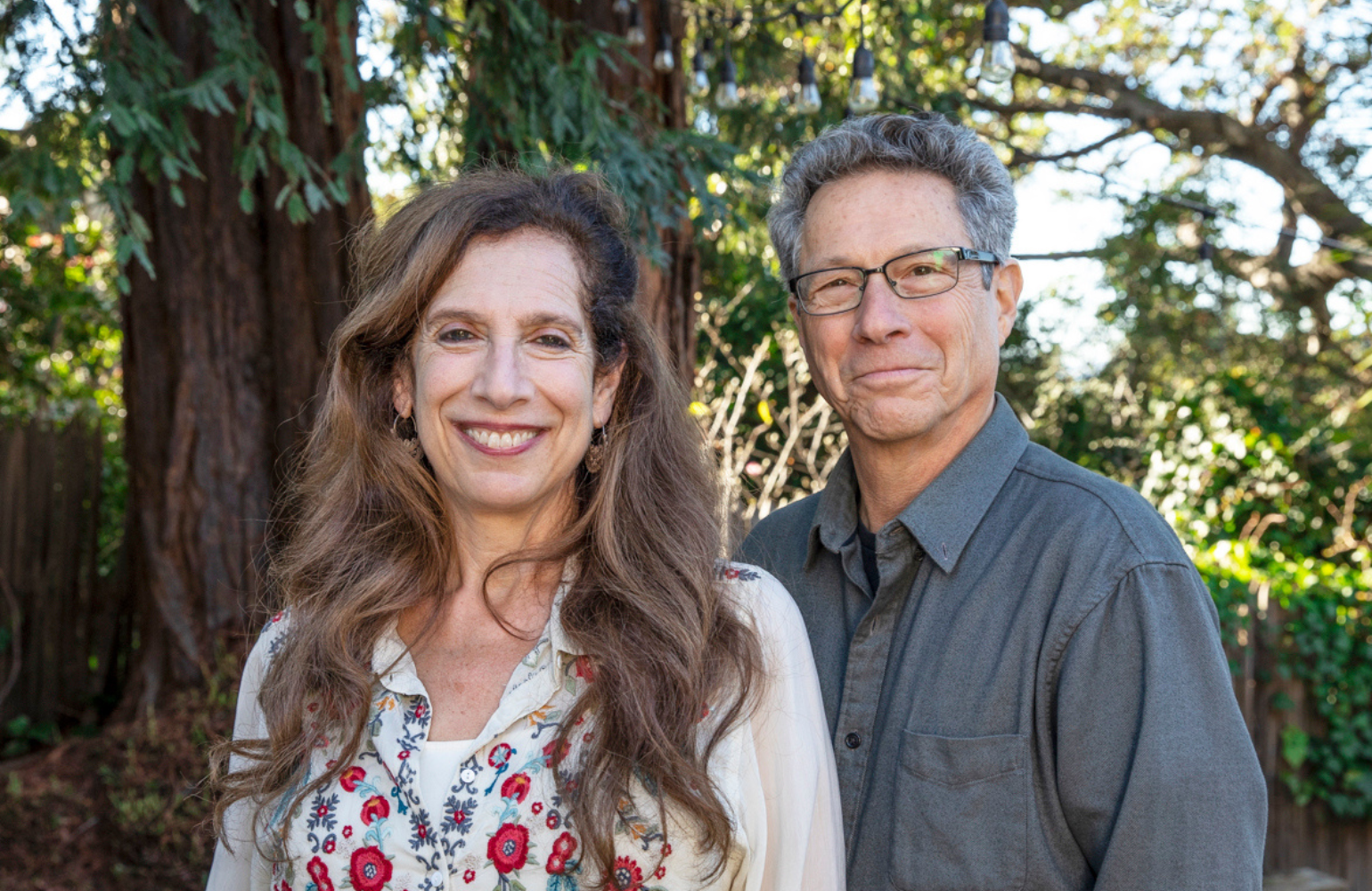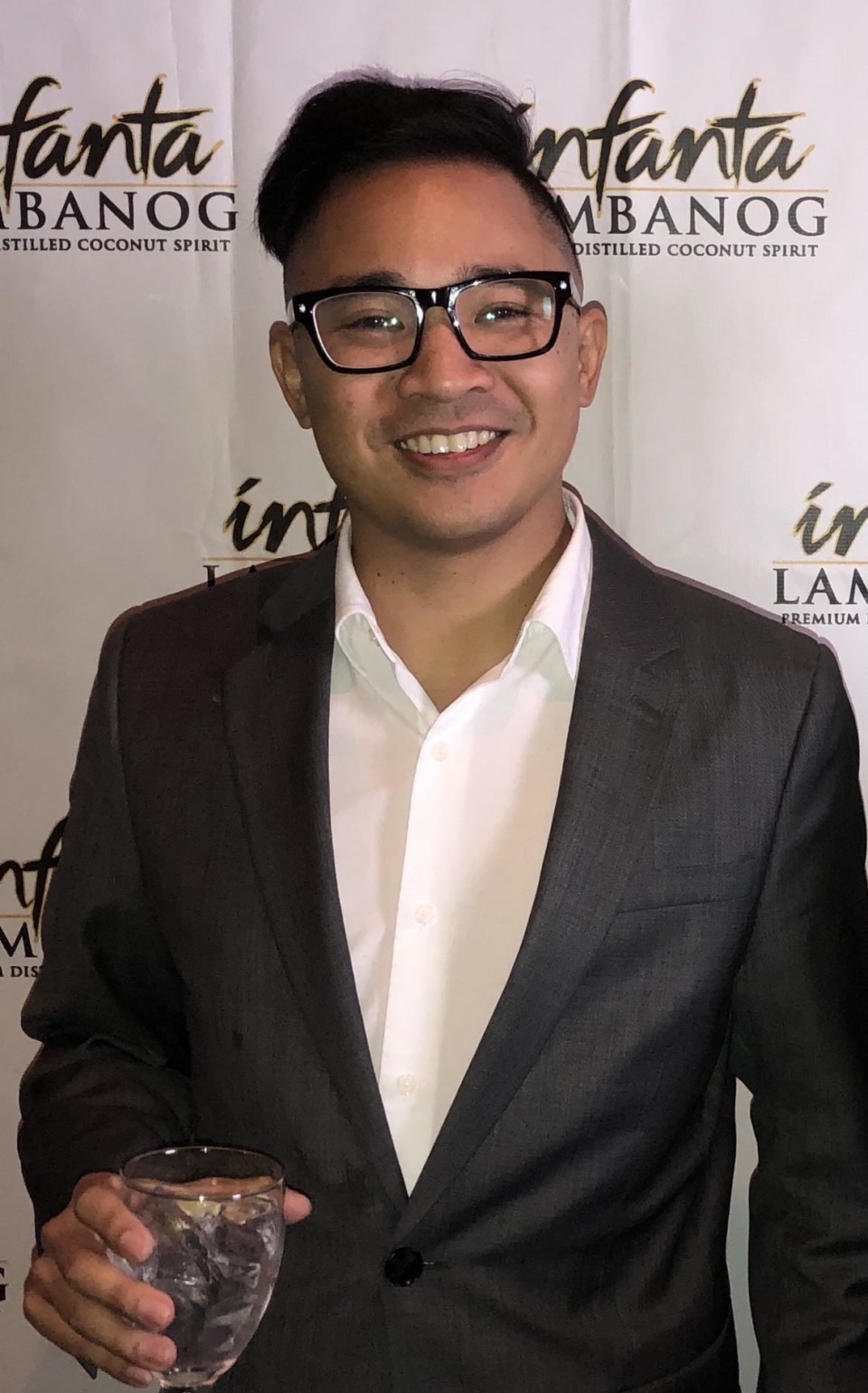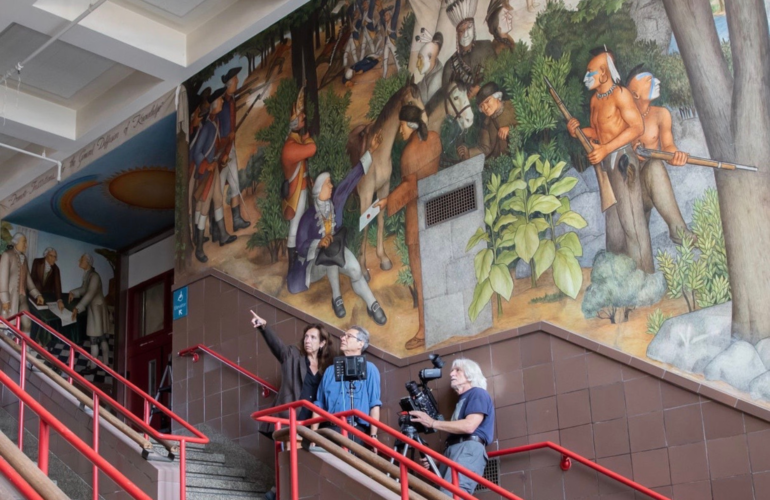A heated debate emanating from San Francisco’s George Washington High School has been making national headlines for the past three years running. The controversy centers on a mural on the school’s walls depicting the life of George Washington, including images of his history of owning slaves and overseeing the slaughter of Native Americans for their land. Should the mural come down, or should we be honest about the brutality of our nation’s origins?
Thought-provoking documentary Town Destroyer, one of the films that will be screened at this year’s Mill Valley Film Festival (MVFF), examines the debate from all angles and perspectives, presenting opinions from a diverse group of onscreen personalities. As a part of MVFF Education, co-directors Deborah Kaufman and Alan Snitow will be meeting with local students to discuss the film. We spoke to Kaufman and Snitow ahead of their visit to MVFF.
Marin Magazine (MM): What do you have planned for your presentation with the students?
Deborah Kaufman (DK): “We’re working with MVFF to put together a study guide to accompany the film. We really hope that the film is something that students will discuss in terms of history, but also in terms of art and questions of censorship. The question that is raised in the film is, does the intent of the artist matter? The film also covers the impact of generational trauma and the need for trigger warnings. All of these issues are being discussed among high school students anyway, so we hope the film can continue that.”

MM: How do you expect the students to react to the film?
DK: “We don’t want to recapitulate the argument at the center of the movie when we speak with the students. We hope they can, as a result of the film, ‘break the binary’ and not look at debate as a zero-sum game. We hope that meeting with the students engenders critical thinking and opens up further inquiry from them. That’s what education is all about, right?”
Alan Snitow (AS): “We showed an excerpt of the film to college students, and the teacher said that the discussion afterward was one of the most exciting she had had in the class all year. People really wanted to talk about it. People are going to have a scattering of all kinds of views about the issue. One person in the film says that nuance is an old way of thinking and that it doesn’t exist anymore. We want to create an atmosphere in which young people can think through the nuances and have two opposing ideas in their heads at the same time.”
DK: “George Washington had all of these good ideas, and he was a slave owner. People can have both good and bad exist within them. Young people feel pressure to take a position, but they can actually be open to multiple, opposing ideas. It’s okay!”
MM: Issues of censorship reverberate throughout the movie. It’s a complex issue.
AS: “There’s a long history of controversy over art. There were so many times throughout history when people tore out the previous regime’s imagery to move forward. Sometimes, when it’s Hitler, or Stalin, or Confederate monuments, there are really good reasons to do that. But there’s also what’s going on right now in libraries with LGBTQ+ books. The conflict over censorship is all around us right now.”
MM: The film doesn’t seem to be biased at all in its presentation of the argument over the mural.
DK: “We’ve had people come away from the film and say, ‘I agreed with everybody!’ [laughs] It’s like… yes! We want to encourage doubt. Can you question your own biases? We’re hoping to generate secondary thought process in the students who watch.”
MM: Do you worry that the discussion among the students may become a little intense?
AS: “The movie sets the conversation up in a way where it’s not just going to be a shout-fest. There is a lot of fear in teachers and students of saying the wrong thing and getting called out. We hope that students can move past that so that they can articulate their feelings and hear others in an atmosphere of compassion and giving people space to say how they feel.”

Bernard Boo is an AAPI arts and entertainment critic, Bay Area native and proud member of the San Francisco Bay Area Film Critics Circle. Find more of his work at PopMatters, Den of Geek and Rotten Tomatoes, and listen to him on the Your Asian Best Friends podcast.


